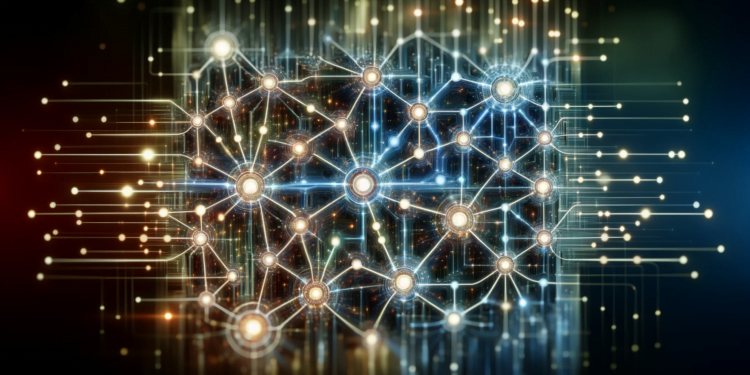Multilayer Perceptron Artificial Intelligence Glossary
- Machine Learning: Also known as Machine Learning, this is a discipline within Artificial Intelligence focused on the development of computer programs capable of learning and improving through experience.
- Neural Network: A neural network is a computational model inspired by the human brain, consisting of a large number of interconnected neurons. These connections enable complex information processing.
- Multilayer Perceptron: A deep neural network architecture created by neuroscience professor Geoffrey Hinton from the University of Toronto. This neural network consists of a series of neuron layers connected to each other.
- Activation Function: A mathematical function used to transform input data into outputs. This function can be linear, non-linear, or other types.
- Backpropagation: Also known as backprop, this machine learning method is used for training deep neural networks. This technique is employed to adjust the neural network’s weights to minimize errors made by the network.
- Hidden Layer: A layer of neurons situated between the input and output layers of a deep neural network. This layer processes input information and generates an internal representation of the data.
- Convolution: A deep learning technique used for feature extraction from an image. This technique is applied to process images, audio, and other data types.
- Pattern Recognition: A machine learning technique employed to detect patterns or regularities in data. This technique is used for classifying and recognizing patterns in images, audio, and other data types.
- Predictive Analytics: A machine learning technique used to predict a system’s future behavior. This technique is utilized to forecast the behavior of financial markets, consumer behavior, and other phenomena.
- Natural Language Processing: A subdiscipline of Artificial Intelligence focused on developing computer systems capable of understanding and responding to natural language. This technique is used to create virtual assistant systems, chatbots, and automatic response systems.
Practical Tips
- Use a deep neural network to process complex information and perform complex tasks. This architecture is incredibly useful for process automation, such as facial recognition, image analysis, natural language processing, and predictive analytics.
- Use the convolution technique to extract features from an image. This method is applied to process images, audio, and other data types.
- Use predictive analytics to predict the future behavior of a system. This method is utilized to forecast financial markets’ behavior, consumer behavior, and other phenomena.
- TensorFlow: An open-source tool for deep neural network development. This tool is used for building, training, and deploying deep learning models.
- PyTorch: An open-source tool for deep neural network development. This tool is used for building, training, and deploying deep learning models.
- NLTK: An open-source tool for natural language processing. This tool is used for constructing, training, and deploying natural language processing models.
- Utilize a deep neural network architecture for processing complex information and carrying out complex tasks.
- Apply the convolution technique for feature extraction from an image.
- Implement predictive analytics to forecast a system’s future behavior.
- Use open-source tools for deep neural network and machine learning model development.
2. Use the backpropagation technique to train a deep neural network. This method is used to adjust the neural network’s weights to minimize the network’s errors.
4. Use pattern recognition to detect patterns or regularities in data. This technique is used for classifying and recognizing patterns in images, audio, and other data types.
6. Use natural language processing to understand and respond to natural language. This technique is used to create virtual assistant systems, chatbots, and automatic response systems.
Useful Tools
2. Keras: An open-source tool for deep neural network development. This tool is used for building, training, and deploying deep learning models.
4. Scikit-learn: An open-source tool for machine learning model development. This tool is used for building, training, and deploying machine learning models.
Best Practices
2. Use the backpropagation technique for training a deep neural network.
4. Employ pattern recognition to detect patterns or regularities in data.
6. Utilize natural language processing to understand and respond to natural language.
Conclusion
Multilayer Perceptron Artificial Intelligence is an advanced form of machine learning based on deep learning. This technology is used for performing complex tasks, such as pattern recognition, predictive analytics, and natural language processing. The architecture consists of interconnected neuron layers and is employed to process complex information.
To fully leverage this technology, it is essential to understand the core concepts of Multilayer Perceptron Artificial Intelligence and consider the practical advice and best practices outlined in this article. Moreover, using open-source tools for developing deep neural networks and machine learning models is crucial. Multilayer Perceptron Artificial Intelligence is a cutting-edge technology increasingly used for automating complex tasks.






















